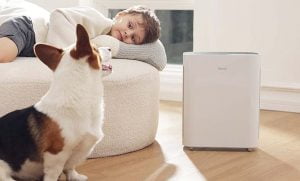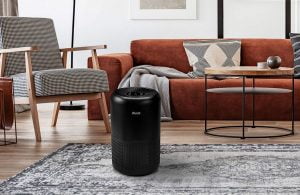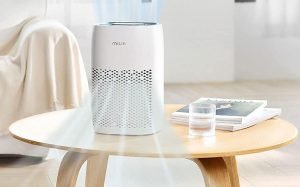Air Purifier Ratings Explained
Air purifier ratings are probably the first thing a potential buyer searches for when he wants to buy an air purifier. While air cleaner ratings are good indication on how good a particular air purifier performs, it is important to know that air purifier ratings do not necessarily tell the whole story.
You see, criteria for rating air purifiers vary widely and so do the condition used to test the air purifier performances. There have been some instances when good quality air purifiers do not rank highly in a particular rating system. Yet, these air purifiers are among the best and are rated as the best by other rating system.
Therefore, it is prudent to exercise caution when looking at studies designed to rate or rank air purifiers. For each study, you need to know something about the methods they use to rank air purifiers. The method will tell you what factors are included in the ranking or rating system, and what factors are excluded. Only by understanding the methods to rank air purifiers, you can get the benefit from air purifier ratings and can choose which air cleaner ratings are the most beneficial for your needs.
Below are different ways on how the ratings for air purifiers are conducted and where you can find air cleaner ratings.
First, is air cleaner ratings from AHAM (Association of Home Appliances Manufacturers)
AHAM employs clean air delivery rate (CADR) as the pinnacle of air purifier performance ratings. AHAM’s air purifier rating system is very popular and is often used by consumers to determine the best air purifiers.
CADR measures the volume of air that a specific air purifier model purify per minute for a specific pollutant. In their tests, conducted in a sealed room, AHAM measures the air purifier effectiveness for removing three types of particulates: dust, pollen and smoke, ranging in size from 0.09 microns to 11 microns every 2 minutes for 20 minutes.
AHAM’s air delivery rates for dust go from 10 to 400, tobacco smoke from 10 to 450, and pollen 25 to 450, with below 100 classified as poor and above 350 excellent.
Although AHAM’s CADR does not tell the whole story and has put some best air purifiers in disadvantage, it’s nevertheless useful for helping customers to evaluate air purifiers. We recommend you to not rely on AHAM rating alone when you are thinking of buying premium air purifiers since some of the best air purifiers are not ranked highly by AHAM air purifier rating system.
However, these CADR are proven useful for comparing performance of less expensive air purifiers (below $250) which specialize in removing bigger particles.
Second, is air cleaner ratings from Consumer Reports.
Consumer Reports are known to rank air purifiers according to their performance and noise level. Like AHAM, this organization has gained trust from customers and consequently, air purifier model which ranks highly on the list will get a lot of customers. In order to rank air purifiers objectively, this organization tests some air purifiers and their methods are pretty similar to those of AHAM.
Basically, Consumer Reports uses a sealed test room with carefully measured particles of dust and smoke injected into the chamber. Air purifiers are then evaluated on how well they remove dust and smoke from the air at set time intervals, running at both high and low speeds. Total allergens in the chamber before and after the air purifier is turned on are then compared.
Both Consumer Reports and AHAM air purifier rating and testing system focus in quick reduction of overall number of particles over a short period of time. However, their air purifier rating systems have a drawback, mainly because most premium air purifiers have many stage of filtration for getting rid of small particles (0.3 micron or less) and therefore are slower in cleaning up the air.
The focus on quick reduction of overal number of particles in both AHAM and Consumer Reports rating system hence put those premium air purifiers in disadvantage.
Therefore, it is important to be aware of the shortcoming of air purifier ratings used by AHAM and Consumer Report, especially if you are looking to buy a premium air purifier and expect theraupetic effects from it.
Their rating systems are good for rating the less expensive air purifier though, because these air purifiers don’t focus on getting rid of the smallest particles and are very appropriately compared to each other on how quickly they get rid of overall number of particles.
Just be aware that the less expensive air purifiers are more appropriate for all around cleaning or to lessen mild problems and are usually built to clean air of smaller rooms.
Third, is air cleaner ratings from certain organizations, vendors or independent websites.
There are many organizations, vendors and independent websites which offer air cleaner ratings. Vendors specializing in allergy products are known to be picky and hence often perform their own in house testing to decide which air purifiers they are going to carry.
Their ratings can sometimes be seen next to the product description in form of star ratings, and usually depend on the performance, noise, ease of use, power, accessories, and whether a particular air purifier is ozone-free.
One vendor, air-purifiers-america.com, which tests air purifier differently from AHAM and Consumer Reports, publishes their performance test results on their website.
Basically, they test in a room resembling a normal room with window and ventilation closed, and they compare the air particle coming into the unit, and then again coming out of the unit in single pass. At Air-Purifiers-America.com, air purifiers that capture the most allergens and produce the cleanest air in single pass get higher ratings. So, consequently, their air purifier ratings results are different from that of AHAM and Consumer Reports.
In addition to vendor testing, there are some organizations and website out there which give independent air purifier ratings with or without testing. Consumerguide.com, for instance, did not test air purifiers, and hence ranks air purifiers based on factors other than performance, such as appearance, price and so forth.
Some websites, also offer air purifier ratings based on available information in the internet. While nothing compared to testing, nevertheless, these websites and organization are helpful in helping customers to shop for air cleaners.
Fourth, is air cleaner ratings from consumers.
Air purifier ratings from consumers are pretty straightforward. They bought certain products, and rated them. Some vendors, shopping comparison sites and customer opinion sites have this kind of rating. Some break down the rating into some categories, whereas some just ask consumers to rate from one to five stars.
You can find consumer air purifier ratings in vendor websites (we recommend www.amazon.com and www.allergybuyersclub.com for air purifier customer ratings)as well as shopping comparison sites such as www.epinion.com. In addition, we, at www.airpurifiergalore.com, are planning to host consumer air purifier rating section in our website in the future.
To Sum Up
To sum up, looking up at the air purifier ratings before buying is a good practice. However, most benefit will be obtained only by knowing what each rating system means.
We also encourage airpurifiergalore.com readers to read various air purifier reviews, like the air purifier reviews available from airpurifiergalore site, prior to buying air purifier.
Finally, we include the following articles (below) to help you to become an informed consumer. After all, you don’t want to waste your hard-earned dollars, do you ?




